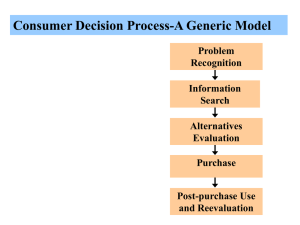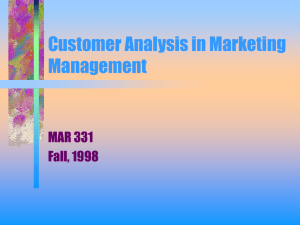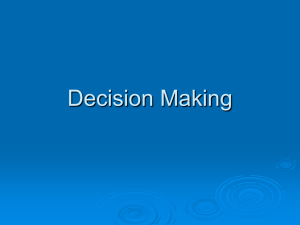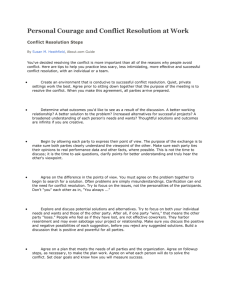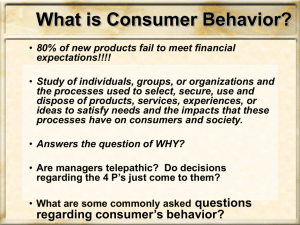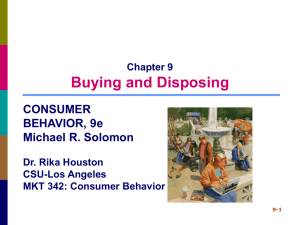BA 3301 Group number 1: Jan Maleninský, Jordan Lamar, Johnson
advertisement
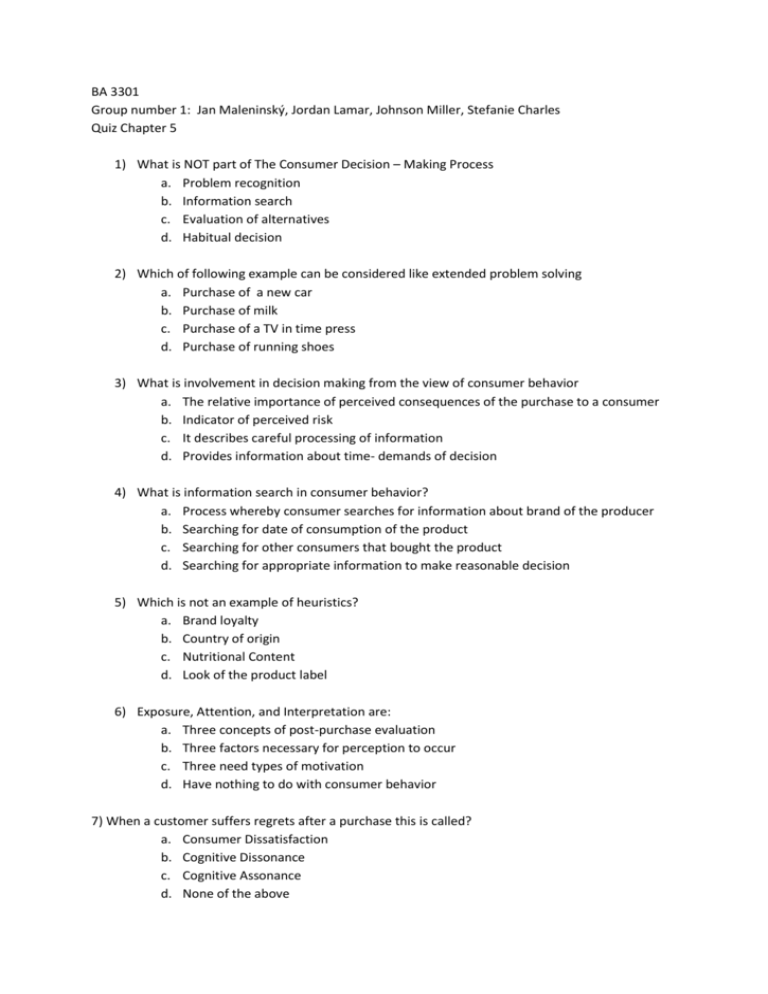
BA 3301 Group number 1: Jan Maleninský, Jordan Lamar, Johnson Miller, Stefanie Charles Quiz Chapter 5 1) What is NOT part of The Consumer Decision – Making Process a. Problem recognition b. Information search c. Evaluation of alternatives d. Habitual decision 2) Which of following example can be considered like extended problem solving a. Purchase of a new car b. Purchase of milk c. Purchase of a TV in time press d. Purchase of running shoes 3) What is involvement in decision making from the view of consumer behavior a. The relative importance of perceived consequences of the purchase to a consumer b. Indicator of perceived risk c. It describes careful processing of information d. Provides information about time- demands of decision 4) What is information search in consumer behavior? a. Process whereby consumer searches for information about brand of the producer b. Searching for date of consumption of the product c. Searching for other consumers that bought the product d. Searching for appropriate information to make reasonable decision 5) Which is not an example of heuristics? a. Brand loyalty b. Country of origin c. Nutritional Content d. Look of the product label 6) Exposure, Attention, and Interpretation are: a. Three concepts of post-purchase evaluation b. Three factors necessary for perception to occur c. Three need types of motivation d. Have nothing to do with consumer behavior 7) When a customer suffers regrets after a purchase this is called? a. Consumer Dissatisfaction b. Cognitive Dissonance c. Cognitive Assonance d. None of the above 8) Measure of consumer activities, interests and opinions used to place consumers into dimensions is called? a. ATO's b. COD's c. AIO's d. WMD's 9) The process individuals or groups go through to select, purchase, use , and dispose of goods, services, ideas, or experiences to satisfy their needs and desires? a. Consumer Behavior b. Consumers Report c. Information Search d. Product Choice 10) What is the first step in the Consumer Decision Making Process? a. Information Search b. Product Choice c. Problem Recognition d. Evaluation of Alternatives e. Post purchase Evaluation 1) D 2) A 3) A 4) D 5) C 6) B 7) B 8) C 9) A 10) C . What are the steps of the Consumer Decision-Making Process in the correct order? A. Problem recognition, information search, evaluation of alternatives, product choice, and postpurchase evaluation B. Problem recognition, product choice, evaluation of alternatives, information search, and postpurchase evaluation C. Problem recognition, information search, product choice, evaluation of alternatives, and postpurchase evaluation D. Postpurchase evaluation, product choice, evaluations of alternatives, information search,, and problem recognition 2. The relative importance of perceived rewards of the purchase to a consumer is involvement. A. True B. False 3. What does SEO stand for? A. See Evaluation Operation B. Search Evaluation Output C. Set Expectation Optimization D. Search Engine Optimization 4. Consumer satisfaction/dissatisfaction occurs in what step of the Consumer Decision- Making Process? A. Step 1 B. Step 2 C. Step 3 D. Step 4 E. Step 5 5. Which one is NOT part of the three factors of perception? A. Exposure B. Concentration C. Attention D. Interpretation 6. Which one of the following is part of the Behavioral Learning Theories? A. Classical Conditioning B. Operant Conditioning C. Both A and B D. None of the above 7. Which one is part of the three attitude components? A. Attitude B. Reasoning C. Cognition D. Approach 8. Timer Poverty influences consumption? A. True B. False 9. A culture includes which of the following? A. Values B. Beliefs C. Customs D. All the above 10. Marketers describe people according to? A. Physical Appearance B. Opinions C. Age D. Diversity Answers 1. A 2. B 3. D 4. E 5. B 6. C 7. C 8. A 9. D 10. B
